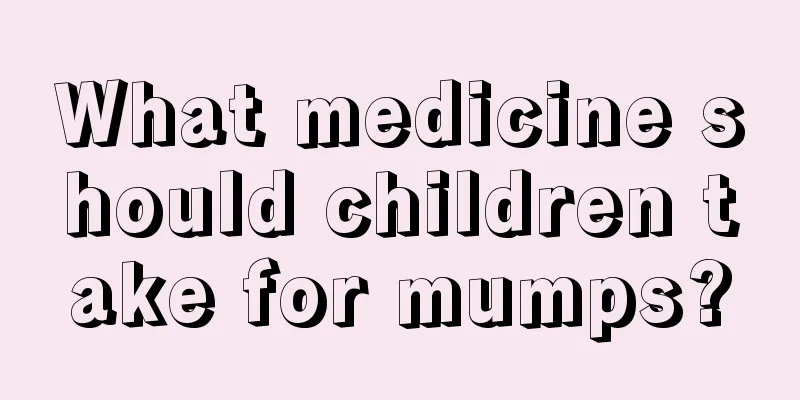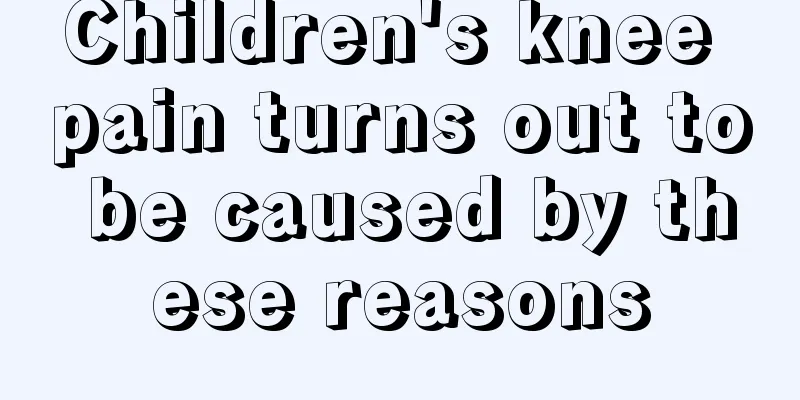How to treat gingivitis in a one and a half year old baby?

|
There is only one good mother in the world. Children with mothers are like treasures, and children without mothers are like weeds. In this world, what mothers worry about most is their own children, and the newborn baby is undoubtedly what mothers worry about the most. Children have weak constitutions and poor resistance, and they can easily get sick. Today, let’s learn about the problem of gingivitis in one and a half year old babies. In medicine, the soft tissue surrounding and covering the teeth is called gums, and acute and chronic inflammation of the gum tissue is called gingivitis. Symptoms include bleeding, red, swollen and painful gums. The disease continues to invade hard tissues and causes periodontitis, which includes inflammation of the gum tissue and manifestations of systemic diseases on the gums. Clinical manifestations include: 1. Bleeding gums: This is often the main symptom of gingivitis patients. It often occurs when brushing teeth or biting hard objects, and occasionally there may be spontaneous bleeding. 2. Gum color: Normal gums are pink. When suffering from gingivitis, the free gums and gingival papillae turn deep red or dark red. This is due to congestion and hyperplasia of blood vessels in the gingival connective tissue. 3. Gum shape: Normal gums should be thin and close to the tooth surface. When suffering from gingivitis, due to tissue edema, the gum margin becomes thicker and no longer close to the tooth surface, and the gingival papilla becomes round, blunt and enlarged, and no longer close to the tooth surface. In cases where inflammation and exudation are the main lesions, the gums are soft and enlarged, with a shiny surface, and the gingival margin is sometimes eroded and exudated; in cases where fibrosis is the main lesion, the gums are tough and enlarged, sometimes nodular and covering part of the tooth surface. 4. Gum texture: Due to inflammatory infiltration in the connective tissue and the disappearance of collagen fibers, the originally dense gums become soft, fragile and lack elasticity. In some chronic inflammations, the epithelium on the gingival surface proliferates and thickens, and collagen fibers proliferate, making the gingival surface appear hard and thick, but the inner wall of the periodontal pocket is inflamed and bleeding is observed upon probing. 5. Depth of periodontal pocket: When the periodontal tissue is healthy, the depth of the periodontal pocket generally does not exceed 2-3mm. When the gums are inflamed, swollen or hyperplastic, the gingival sulcus can deepen to more than 3mm, forming a false periodontal pocket. 6. Bleeding on probing: Healthy gums will not cause bleeding when brushing or probing the gingival sulcus. When you have gingivitis, your teeth will bleed when you touch them lightly, and they will also bleed when you probe them. Bleeding after probing is an important objective indicator for diagnosing whether the gums are inflamed. 7. Increased gingival crevicular fluid: When the gums are inflamed, the exudation of gingival crevicular fluid increases, and the number of white blood cells in it also increases significantly. Some patients may also have gingival crevicular pus. Therefore, measuring the amount of gingival crevicular fluid can be used as an indicator to determine the degree of inflammation. 8. Some patients occasionally feel local itching, swelling and other discomforts on the gums, and have bad breath. Gingivitis is classified as: 1. Chronic gingivitis: It is the most common form with a high prevalence. Almost everyone will experience chronic gingivitis of varying degrees and scope at some point in their life. The plaque accumulated on the tooth surface near the gum margin is the initiating factor of chronic gingivitis. Other factors such as tartar, food impaction, poor restorations, misaligned and crowded teeth, mouth breathing, etc. can promote the accumulation of plaque and cause or aggravate gingival inflammation. 2. Adolescent gingivitis: It is a type of gingivitis affected by endocrine system. Both men and women can suffer from the disease, but there are slightly more female patients than male patients. Plaque is still the main cause of adolescent gingivitis. People in this age group have difficulty cleaning their teeth due to the replacement of deciduous and permanent teeth and uneven tooth arrangement. In addition, it is difficult for patients in this age group to maintain good oral hygiene habits, which can easily lead to the retention of plaque and cause gingivitis. Changes in sex hormone levels in adolescent boys are systemic factors of adolescent gingivitis. The gums are the target tissues of sex hormones. Due to endocrine changes, the responsiveness of the gingival tissue to local irritants such as plaque increases, resulting in more obvious inflammation or aggravating existing chronic gingivitis. 3. Pregnancy gingivitis: Similar to adolescent gingivitis, it is also caused by changes in systemic hormone levels, which aggravates the original chronic gingival inflammation, causing the gums to swell or form gingival tumor-like changes. The lesions may be alleviated or disappear on their own after delivery. 4. Acute gingival papillitis: The lesions are limited to individual gingival papillae. The gingival papillae are subjected to mechanical or chemical stimulation such as food impaction, improper use of toothpicks, punctures by hard and sharp foods, poor edges of restorations, etc., resulting in acute inflammation, which is manifested as redness and swelling of individual gingival papillae, spontaneous distending pain and obvious tenderness upon touch, and even pain from cold or hot stimulation. 5. Necrotizing ulcerative gingivitis: The cause is the infection caused by the massive proliferation of fusobacteria and spirochetes in the oral cavity. It usually occurs when the body's resistance is reduced, there is malnutrition, or excessive fatigue. The onset is relatively acute. Within the first two or three days, the gums become red, swollen, and bleeding, and the edges of the gums rot. The eroded area is covered with a grayish white pseudomembrane which is easy to wipe off. The gingival papilla disappears as if cut by a knife, there is a bad odor in the mouth, saliva secretion increases, and saliva flows out from the corners of the mouth during sleep, often contaminating the pillow. If the ulcer spreads to the cheeks, palate, lips, tongue, etc., it becomes necrotizing stomatitis. If not treated promptly, it can be life-threatening. If it develops to the throat, it will cause throat pain and make eating and swallowing very painful. Swollen submandibular lymph nodes and high fever may occur in patients with poor general health. So, how to treat gingivitis in a one and a half year old baby? First of all, you need to pay attention to your personal oral hygiene habits, brush your teeth and rinse your mouth in time, and avoid eating spicy, irritating and hard foods. Next, you need to take some oral medicines, such as Periodontal Capsules, Yanlixiao Capsules, and Azithromycin Dispersible Tablets. Well, that’s all we need to know about gingivitis in one and a half year old babies today. When the baby is sick, inexperienced new mothers will usually be a little panicked, but at this time mothers must remember not to be anxious. This is when the baby needs you the most, and you must take the baby to the hospital for medical treatment in time. |
<<: What are the early symptoms of cataracts in infants?
>>: Can children eat Cistanche deserticola?
Recommend
White spots in infants' mouths
If there are white spots in the mouth of infants ...
What to do if a little girl has body odor
It is quite common for girls to have body odor, e...
What to do if your baby has balanitis
Taking care of a baby boy is not an easy task. If...
Solution to white tongue coating in newborns
The physical health of newborns is something that...
How to deal with a child who falls
Children's skin is very delicate, and their k...
Newborn baby's stool is a little green
Newborn babies are always breastfed, so they alwa...
What to do if your 2-year-old baby has a runny nose
The weather in spring is changeable. It is cold i...
Can I breastfeed during the confinement period when I have a cold?
After giving birth, women's vitality will be ...
What to do if your child sneezes
Children are the most concerned people in a famil...
How to change milk powder for newborns
It is not recommended to change milk powder for n...
How to improve children's self-confidence
We will find that children with self-confidence a...
What other symptoms does high back muscle tension cause in babies?
When many babies are practicing walking or when t...
What's a good breakfast for kids? 7 Foods Rich in Nutrients
Children's health has always been the top con...
What to do if your child is wheezing
Children have relatively weak physical resistance...
Is it good or bad for children to chew gum?
On the one hand, chewing gum has benefits. Eating...









